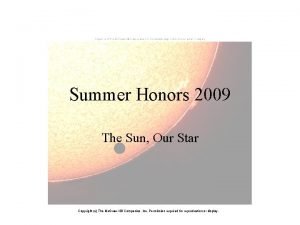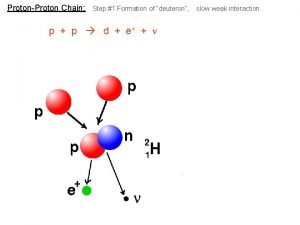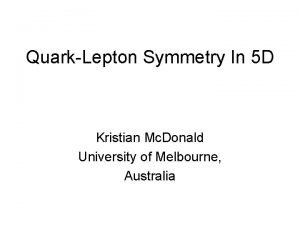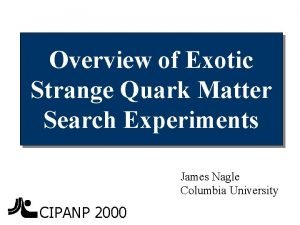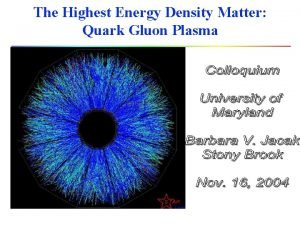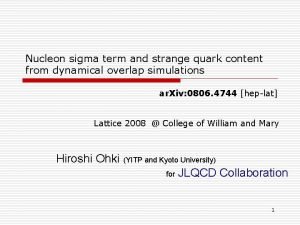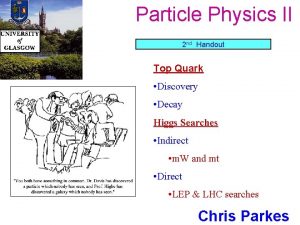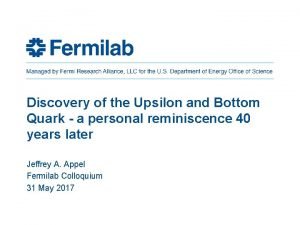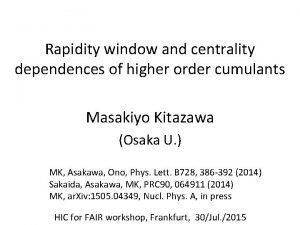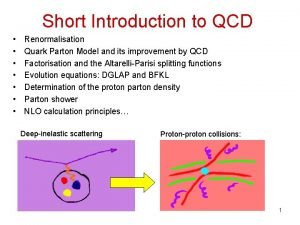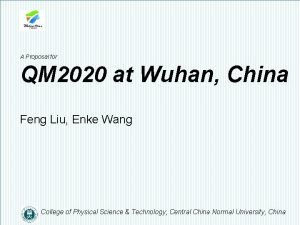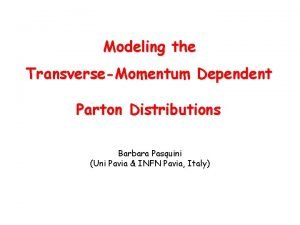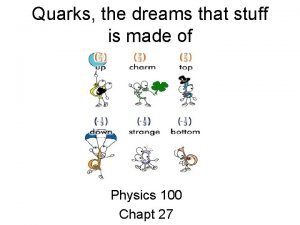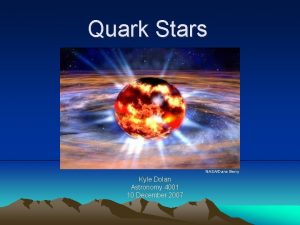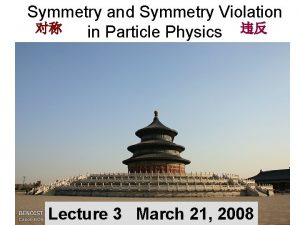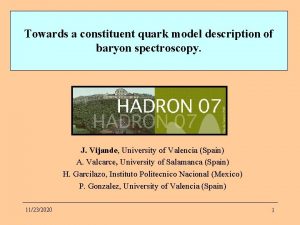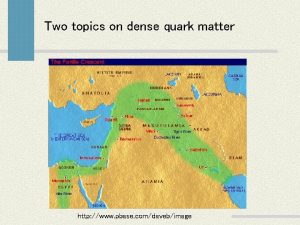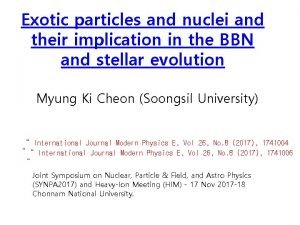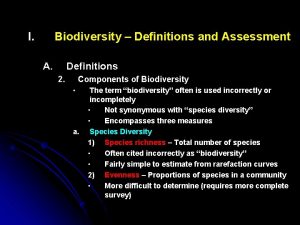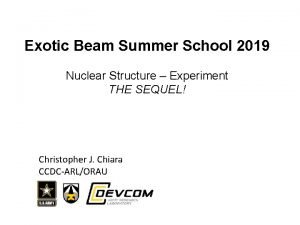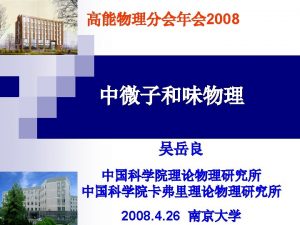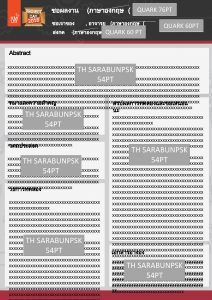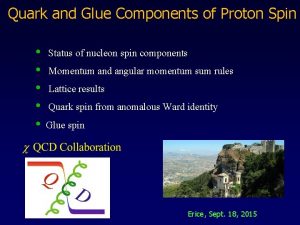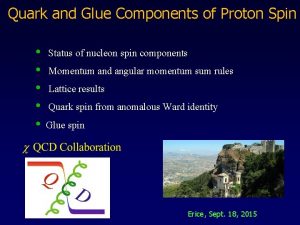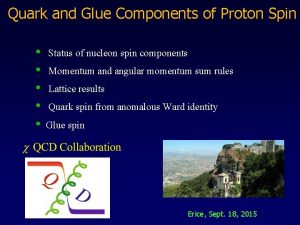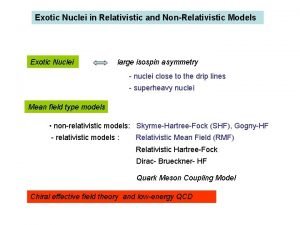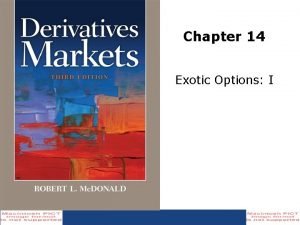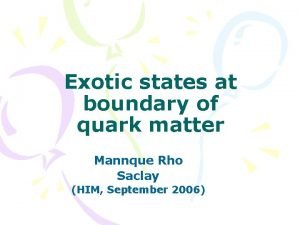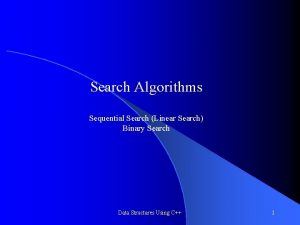SEARCH FOR EXOTIC QUARK COMPONENTS IN PROTON AT












































- Slides: 44

SEARCH FOR EXOTIC QUARK COMPONENTS IN PROTON AT HARD P-P COLLISIONS Gennady Lykasov in collaboration with Vadim Bednyakov and Yuri Stepanenko JINR, Dubna ATLAS Meeting, September 22 -23, 2014 1

OUTLINE 1. Intrinsic flavour in proton 2. PDF including intrinsic heavy quark components 3. Hard parton-parton collisions and heavy flavour production 4. Intrinsic charm (IC) in proton and open charm production at hard p-p collisions 5. Intrinsic strangeness (IS) in proton and open strangeness production at hard p-p collisions 6. Possible observation of IC signal in γ +c-jet production by p-p collisions at LHC 7. IC & IS signals in W+b (c)-jet production by p-p at LHC 8. Summary ATLAS Meeting, September 22 -23, 2014 2

BHPS model S. J. Brodsky, P. Hoyer, C. Peterson and N. Sakai, Phys. Lett. B 93 (1980) 451; S. J. Brodsky, S. J. Peterson and N. Sakai, Phys. Rev. D 23 (1981) 2745. is J. Pumplin, H. L. Lai and W. K. Tung, Phys. Rev. D 75 (2007) 054029


CHARM QUARK DISTRIBUTIONS IN PROTON Charm quark distributions within the BHPS model. The three panels correspond to the renormalization scales Ge. V respectively. The long-dashed and the short-dashed curves correspond to respectively using thn e PDF CTEQ 66 c. The solid curve and shaded region show the central value and uncertainty from CTEQ 6. 5, which contains no IC. There is an enhancement at x>0. 1 due to the IC contribution

COMPARISON OF LIGHT AND HEAVY QUARK DISTRIBUTIONS IN PROTON The dotted line is the gluon distribution, the blue long-dashed curve is the valence u-distribution, the blue short-dashed line is the valence d-distribution, the green long-dashed-dotted line is the intrinsic , the short dashed-dotted line is the intrinsic distribution , the dashed-dotted is the intrinsic and the solid curves are with no IC (lowest) and with IC, respectively. It is shown that IC contribution is larger than at x>0. 2

Hard processes For example, leading order QCD.

PRODUCTION OF HEAVY FLAVOURS IN HARD P-P COLLISIONS One can see that If then, and the conventional sea heavy quark (extrinsic) contributions are suppressed in comparison to the intrinsic ones. is related to and. So, at certain values of these variables, in fact, there is no conventional sea heavy quark (extrinsic) contribution. And we can study the IQ contributions in hard processes at the certain kinematical region.

Single production in p-p at Te. V. G. L. , V. A. Bednyakov, A. F. Pikelner, N. P. Zimin, Eur. Phys. Lett. 96 (2012)21002

D 0 experiment at Tevatron for The data-to-theory ratio of cross sections as a function of for. There is the three time excess of the data above theory at. It stimulates us to study

PHOTON (DI-LEPTON) AND c(b)-JETS PRODUCTION IN P-P Fig. a. Feynman diagram for the process Fig. b. Feynman graph for the process To observe the IC for Fig. a for Fig. b

IC signal in V. A. Bednyakov, M. A. Demichev, G. L. , T. Stavreva, M. Stockton, hep-ph/1305. 3548 Phys. Lett. B 728 (2014) 602. distribution of photons produced in The blue line is calculation without the IC. The red curve includes the IC, its probability is about 3. 5 % (top). The ratio of spectra with and without the IC The IC signal is about 200%-250% at where the cross section is about 20 -80 fb (400 -3200 events) and can be measuered

Production of vector bosons accompanied by heavy flavour jets main subprocess Feynman diagram of the subprocess

Production of Z-boson in p-p accompanied by c-jet at s 1/2 = 8 Te. V, 1. 52<y. Z <2. 4 The p. T – spectrum of c-jet in the The ratio of p. T – spectra with process IC (~3. 5%) and without it One can see that the inclusion of the IC (~3. 5%) contribution in PDF increases the spectrum by a factor of 2 and more at p. T >200 Ge. V/c

PT spectrum of b-jet in the process pp W+b(jet)+X at , 2. 0<|η|<2. 5. The read line is without IC, The blue curve is with the IC, its probability is about 3. 5 %. Here W->e +e-’, G. L. , et. Al. , Nucl. Phys. B [Proc. Suppl]245(2013), 215. The ratio of PT spectra with and without the IC. The IC inclusion leads to the increase of the spectrum by a factor 1. 4 -1. 5 at PT ~150 -200 Ge. V/c, where the number of the events is about 5 -10 including both decays of W into e +e- and μ+ μ-

pp W/Z+heavy flavour jets

IC signal in the production of W/Z accompanied by both c- an b-jets The ratio for the processes including the IC contribution and ignoring it

SUM MARY 1. It is shown that at the contribution of the conventional (extrinsic) sea heavy quark distributions is negligibly small in comparison to the intrinsic one. It does not contribute to the heavy flavour production in p-p collisions at high energies. 2. The signal of the intrinsic charm (IC) and strangeness (IS) in proton can be studied in the inclusive open charm and open strangeness production in p-p at the LHC. The IC and IS signal can be about 200 % -300% at high y and pt 3. These intrinsic heavy quark contributions to the PDF can be studied also in the hard SM processes of production of and W/Z associated with the heavy flavour c- and b-jets. 4. The IC and IS contributons can be about also 250%-300 % at certain values of rapidities and transverse momenta of photons or vector bosons. They can be measured at LHC

THANK YOU VERY MUCH FOR YOUR ATTENTION ! ATLAS Meeting, September 22 -23, 2014 19

BACK UP

INTRINSIC HEAVY QUARK DISTRIBUTION IN PROTON Integrating over and neglecting of all quark masses except the charm quark mass we get Where normalization constant. Here is the bar mass of the charmed quark. determines some probability to find the Fock state in the proton. One can see qualitatively that vanishes at and has an enhancement at

INTRINSIC HEAVY QUARK STATES Two types of parton contributions The extrinsic quarks and gluons are generated on a short time scale in association with a large transversemomentum reaction. The intrinsic quarks and gluons exist over a time scale independent of any probe momentum, they are associated with the bound state hadron dynamics.

G. L. , A. A. Grinyuk, I. V. Bednyakov, Proc. Baldin Conference, Dubna, Sept. 2012; C 12 -09 -10. 4; ar. Xiv: 1212. 6381 [hep-ph]. The red line is the spectrum of mesons produced in p-p at =158 Gev, y=1. 3 (top) and y=1. 7 (bottom) without IC ; the green curve is the same as the red one but with the IC contribution, its probability is about 2. 5 %. The dotted line coresponds to the ratio of the spectra with IC and without IC minus 1. The IC signal is about 200 % at high transverse momenta


Comparison of the HERA data with calculation within the BHPS at Q 2 about 2. 5 Gev 2, μ is the QCD scale. A. Airapetian, et al. , Phys. Lett. B 666 (2008) 446; J. Peng, W. Cheng, hep-ph/1207. 2193. There are new HERMES data on S(x), which show a flat at x>0. 1

What we are doing now ?


SEARCH FOR INTRINSIC STRANGENESS IN P-P At above 0. 1 there can be an enhancement due to the IS. It means that the possible IS signal depend on and does not depend on Therefore, it makes the certain sense to measure mesons in p-p collisions at NA 61, CBM & NICA to observe a possible intrinsic strangeness in the proton

SEARCH FOR INTRINSIC STRANGENESS IN P-P At above 0. 1 there can be an enhancement due to the IS. It means that the possible IS signal should depend on p. T/s 1/2 and does not depend on S 1/2. In p. A and AA collisions the IS signal can be more visible Because the yield of K-mesons is larger than in pp collisions Therefore, it makes the certain sense to measure mesons in p-p collisions at NA 61, CBM & NICA to observe a possible intrinsic strangeness in the proton

The x-distribution of the intrinsic Q calculated within the BHPS model. There is an enhancement at x > 0. 1 Jen-Chieh Peng & We-Chen Chang, hep-ph/1207. 2193.


The x-distribution of the charm quarks xc(x, Q 2) in proton; the solid black line is the IC contribution with its probability about 3. 5 %, the dash green curve is the see charm quark contribution xcsea (x, Q 2) at Q 2=1. 69 Ge. V 2. There is enhancement at x>0. 1.

The x-distribution of the charm quarks in the proton at Q 2=1000 Ge. V 2 ; the solid black line is the radiatively generated charm density distribution only , whereas the dashed curve is the sum of and the intrinsic charm density with its probability about 3. 5 %. There is the sizable enhancement at x > 0. 1.

MC PYTHIA 8, LO QCD


Comparison of the HERMES data with calculation within the BHPS at Q 2 about 2. 5 Gev 2, μ is the QCD scale. A. Airapetian, et al. , Phys. Lett. B 666 (2008) 446; J. Peng, W. Cheng, hep-ph/1207. 2193.

The x-distribution of the intrinsic Q calculated within the BHPS model. There is an enhancement at x > 0. 1 Jen-Chieh Peng & We-Chen Chang, hep-ph/1207. 2193.

Double D 0 production in pp at The number of D 0 D 0 events in p-p as a function of the transverse momentum including the intrinsic charm in proton (red histogram) with the probability about 3. 5%. without IC. including IC and


Single D 0 production in p-p Pseudo-rapidity η distribution of produced in p-p




 Proton proton chain
Proton proton chain Fission definition
Fission definition Proton proton chain
Proton proton chain Quark lepton symmetry
Quark lepton symmetry Quark gluon
Quark gluon Quark matter
Quark matter Kako napraviti masni sir od kravljeg mlijeka
Kako napraviti masni sir od kravljeg mlijeka Quark gluon
Quark gluon Sigma quark composition
Sigma quark composition Top quark decay
Top quark decay Quark names
Quark names Quark gluon plasma
Quark gluon plasma Quark parton model
Quark parton model Quark matter 2022
Quark matter 2022 Quark names
Quark names Barbara pasquini
Barbara pasquini Quark types
Quark types Quark astronomy
Quark astronomy Physics wordle quark
Physics wordle quark A charm quark has a charge of approximately
A charm quark has a charge of approximately Constituent quark model
Constituent quark model Quark gluon plasma
Quark gluon plasma Ferrari rental houston
Ferrari rental houston Exotic nucleosynthesis
Exotic nucleosynthesis Exotic species definition
Exotic species definition Woman walking in an exotic forest
Woman walking in an exotic forest The cult of the exotic romanticism
The cult of the exotic romanticism Exotic breeds of rabbits
Exotic breeds of rabbits Exotic species definition
Exotic species definition Shannon wiener index definition
Shannon wiener index definition Static hedging of exotic options
Static hedging of exotic options Exotic beam summer school
Exotic beam summer school Is the colorado river an exotic stream
Is the colorado river an exotic stream Exotic species definition
Exotic species definition Naturalized species definition
Naturalized species definition Exotic species definition
Exotic species definition Search engine architecture
Search engine architecture What are the four components of a search engine
What are the four components of a search engine Inköpsprocessen steg för steg
Inköpsprocessen steg för steg Presentera för publik crossboss
Presentera för publik crossboss Egg för emanuel
Egg för emanuel Mall för debattartikel
Mall för debattartikel Varians formel
Varians formel Tack för att ni lyssnade bild
Tack för att ni lyssnade bild Tack för att ni har lyssnat
Tack för att ni har lyssnat
